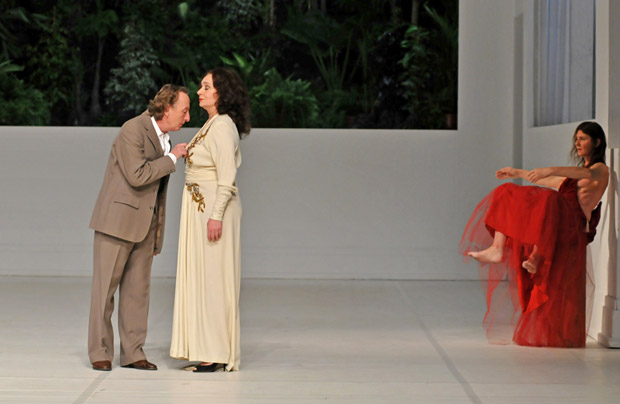
© Dave Morgan. (Click image for larger version)
Tanztheater Wuppertal Pina Bausch
Two Cigarettes in the Dark
London, Sadler’s Wells
22 February 2013
A few of Dave Morgan’s pictures are used here but do see the complete review photoshoot…
Associated gallery of 18 pictures by Dave Morgan
www.pina-bausch.de
www.sadlerswells.com
Working backwards from the title song that ends Two Cigarettes in the Dark, it’s possible to discern a theme in Pina Bausch’s 1985 piece. The lyrics, written in 1934 and recorded by Bing Crosby, reveal that the singer has been two-timed by his sweetheart. He sees by the light of a match the clandestine pair of lovers smoking and whispering in the dark.
Thus, when Mechthild Grossmann starts the piece by inviting us in her gravelly voice: ‘Why don’t you come in, my husband is at war’, we are immediately complicit in betrayal. The audience is the fourth wall of a white room with a reflecting screen at the back. Projected images transform it into a window onto a tropical forest. Along one side is a window onto sand and cacti; on the other side are acquarium tanks containing a multitude of (live) fish. The weirdly-behaved humans who occupy the room could be patients in a clinical asylum – or simply Bausch regulars in yet another Peter Pabst set.
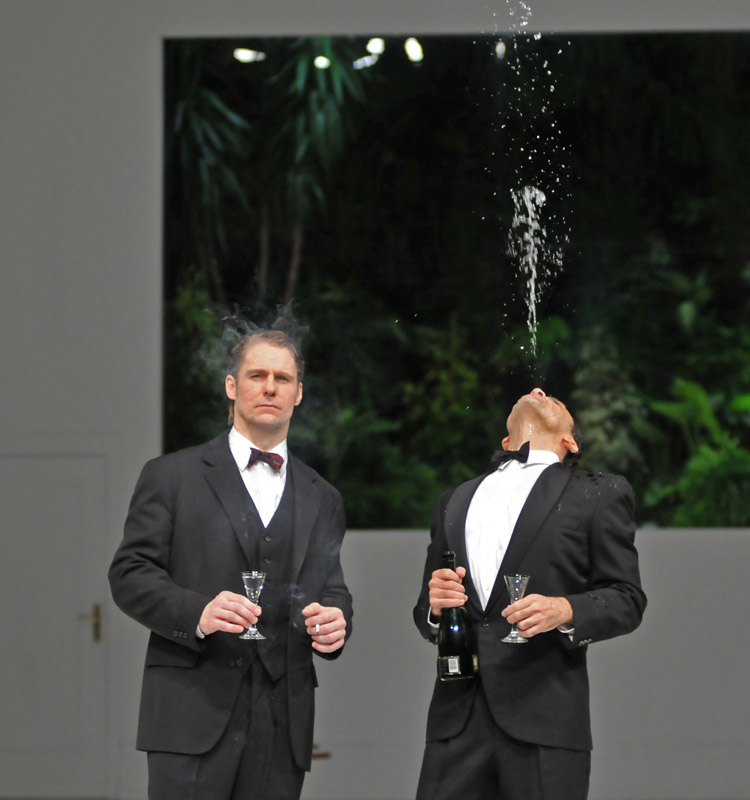
© Dave Morgan. (Click image for larger version)
Most of the cast of eleven are senior members of the company: three, Grossmann, Dominique Mercy and Helena Pikon, were in the original 1985 cast. Grossmann presents herself as the (relatively) sane voice of reason, protesting at one point that she can’t understand what’s going on. Mercy is an absurdist compère, an unreliable clown out-of-kilter with other suave men in formal suits. Pikon is the principal woman in evening dress having a nervous breakdown.
She enters in a voluminous ballgown, flailing in frantic fits of distress. Maybe she’s been let down – or worse – by a lover. She seems in a trauma, either comatose, propped on a chair, or hurling herself against the walls, yanking a cooking pot behind her. Other women run in screaming, out of control. The men remain impassive, even when spewing champagne out of their mouths as they toast each other. One, Michael Strecker, casually wields a wood-chopper with which he cuts an orange in half to make cocktails.
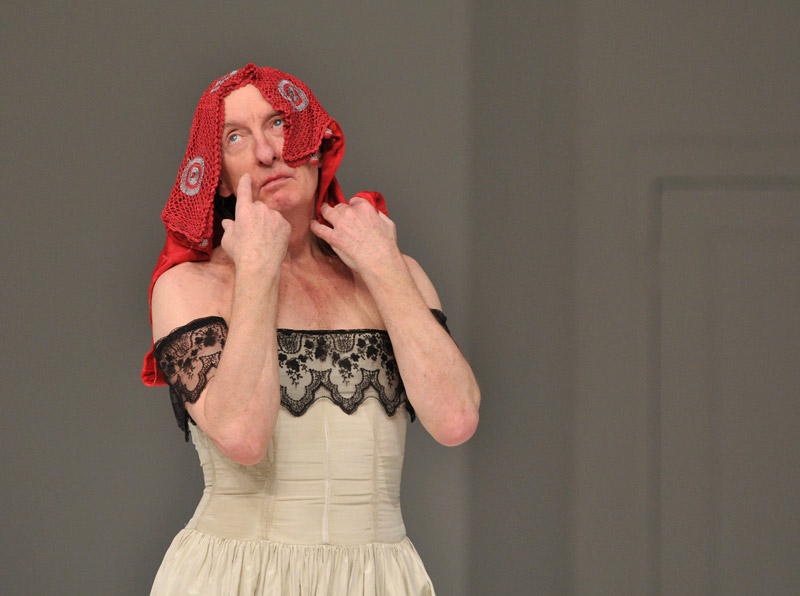
© Dave Morgan. (Click image for larger version)
Just when you assume the women are victims, the men control freaks, the stereotypes crack apart. Small, sturdy Aida Vainieri can be as stroppy as Grossmann; Pikon turns on a man, threatening him with a chair; Mercy is required to kiss semi-naked Franko Schmidt, both of them daubed with lipstick. Inevitably, Mercy cross-dresses in a ballgown and high heels; more surprisingly, reduced to his underpants and with flippers on his feet, he immerses himself in one of the fish tanks.
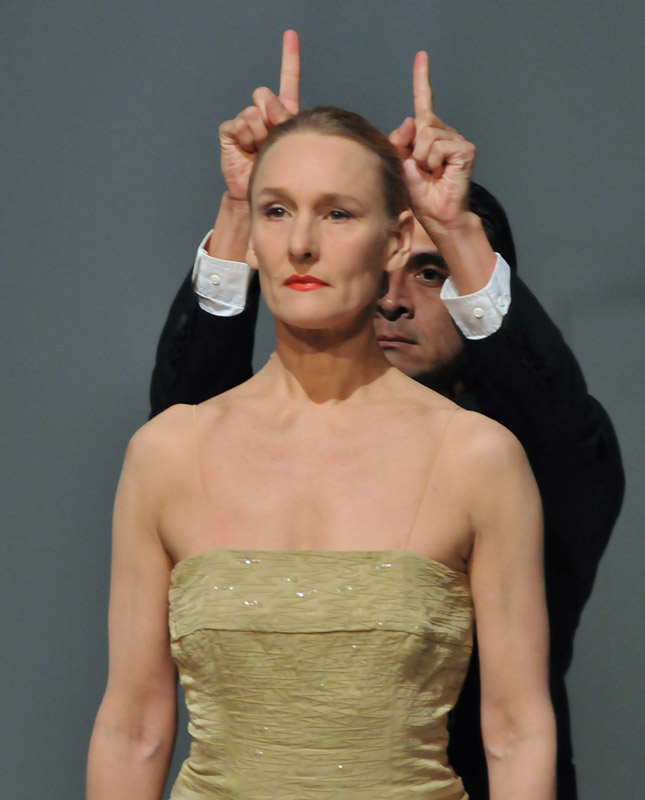
© Dave Morgan. (Click image for larger version)
Julie Shanahan appears to embody Hollywood glamour, donning a white mink coat and sling-back stilettoes. When she strips down to her petticoat and bare feet, she moves with beautiful fluency, arms curling about her upper body; she’s a dancer, not a screen goddess. Shanahan has vignettes of pure pleasure, abandoning herself in her coat while men in swimming trunks, dark glasses and ludicrous boots skate around her. One flutters his hands behind her shoulders, providing her with little wings. She’s cooler than Vainieri, who battles in vain to levitate from a little black carpet. But then Vainieri finds her own private bliss within a stripey towel, rocking herself as if in a hammock.
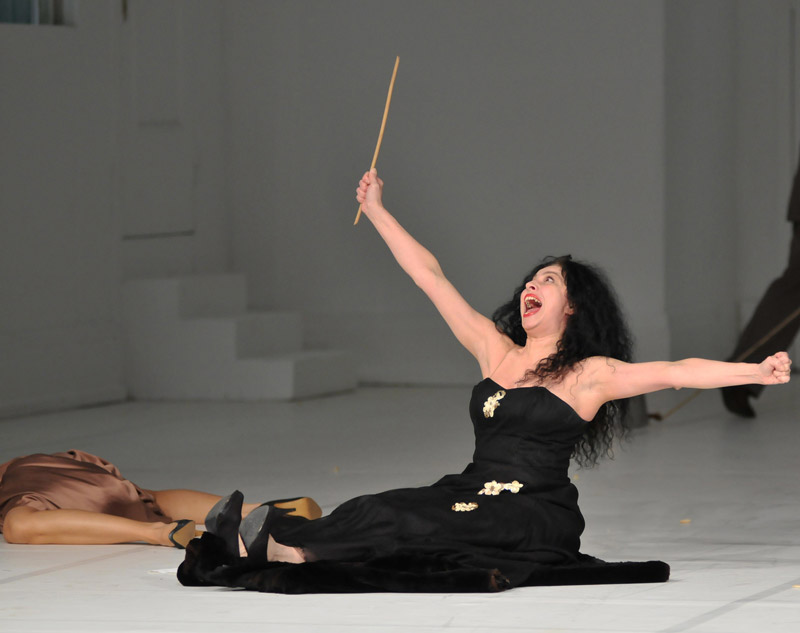
© Dave Morgan. (Click image for larger version)
Dapper Daphnis Kokkinos holds Thusnelda Mercy aloft so that she can swim through the air in one of many fantasies of flying. The daughter of Dominique and former Bausch dancer Malou Airadou, Thusnelda, the youngest member of the company, replaced Ruth Amarante on the first night, inheriting her claim to be ‘sweet and little’. The role is of the happy innocent, while Pikon seems doomed to carry on suffering.
An egg is thrown from off-stage with paper wings attached – needless to say, it fails to fly. Other Dadaist appearances include a cow (artificial), a dog (real) and a lump of dough (unleavened). By the end, nature invades the white room, as Grossmann, fag in mouth, shovels hay and coal onto the shiny floor. But first we have to endure ritual humiliations of both sexes, as ever with Bausch. These inmates cannot feel liberated for long, and Two Cigarettes is very long. For the entire duration Ravel’s La Valse – familiar from the Royal Ballet’s latest Ashton tribute – a line of linked dancers rock from side to side on their bottoms, gradually chugging themselves around the stage. The picture windows are shuttered, the doors closed: no way out. The cast are adrift in limbo, woozily knocking back cocktails as Ravel’s music grows more and more ominous.
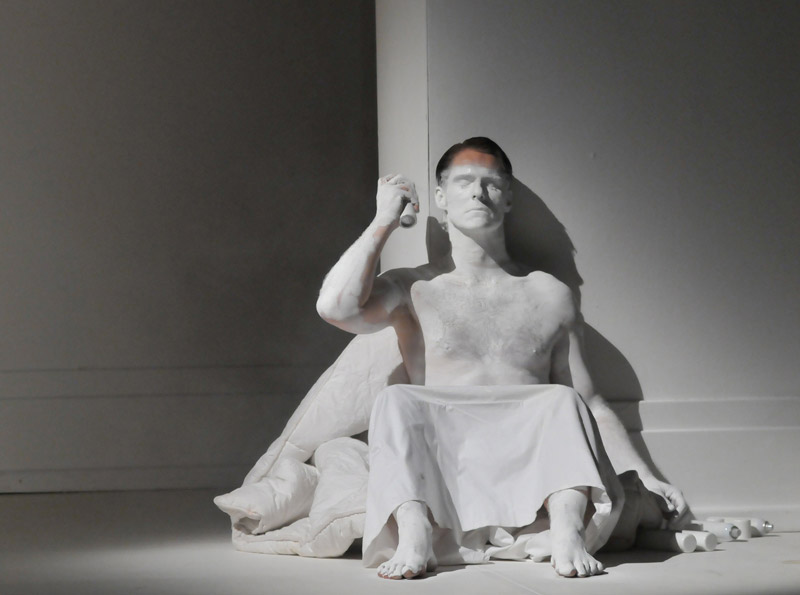
© Dave Morgan. (Click image for larger version)
We seem to be watching the last throes of a brittle civilisation, drinking and smoking in the dark. But there are further inexplicable scenes to come, sending fed-up audience members to the nearest exit. Mercy prepares a meal; Grossmann shovels away and chops up wooden hangers; Strecker sits by the edge of the stage, spraying himself ghostly white. Finally, the rest of the cast parade to Crosby’s voice crooning the title song. By then, the piece seems so disjointed that its only message is the ultimate futility of life and love. No wonder Two Cigarettes in the Dark has so rarely been revived.








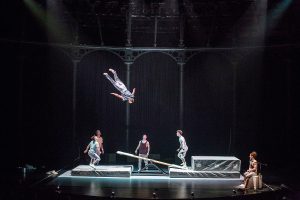

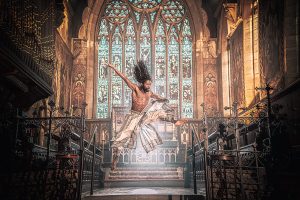

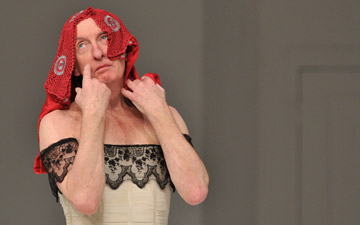
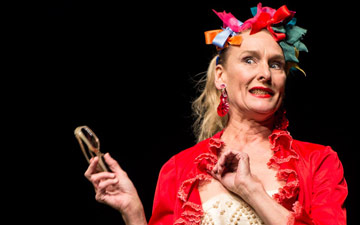
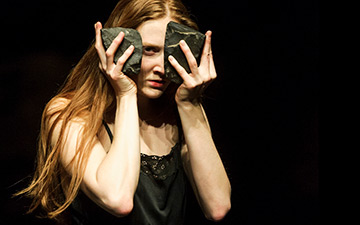
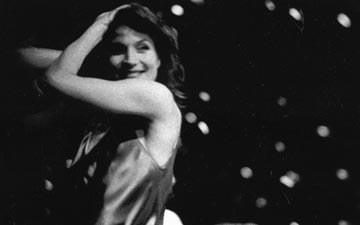
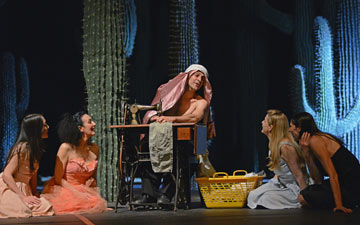
You must be logged in to post a comment.